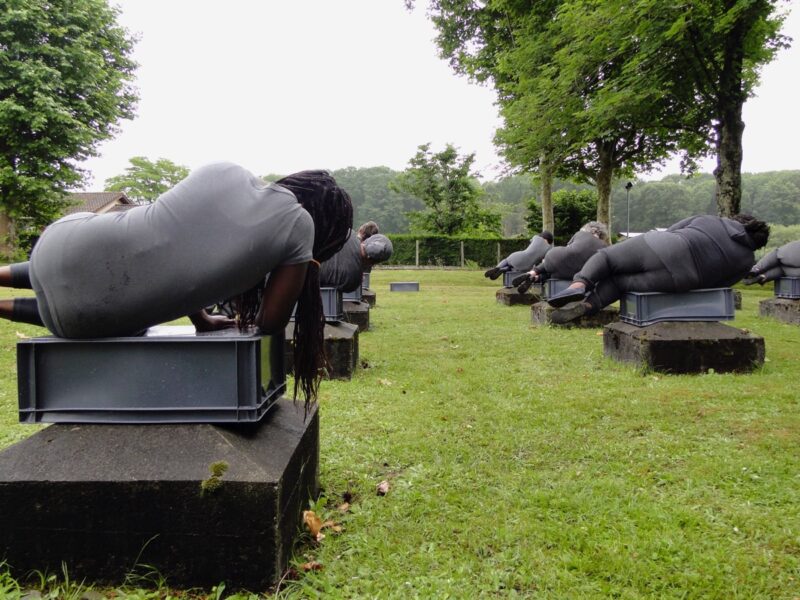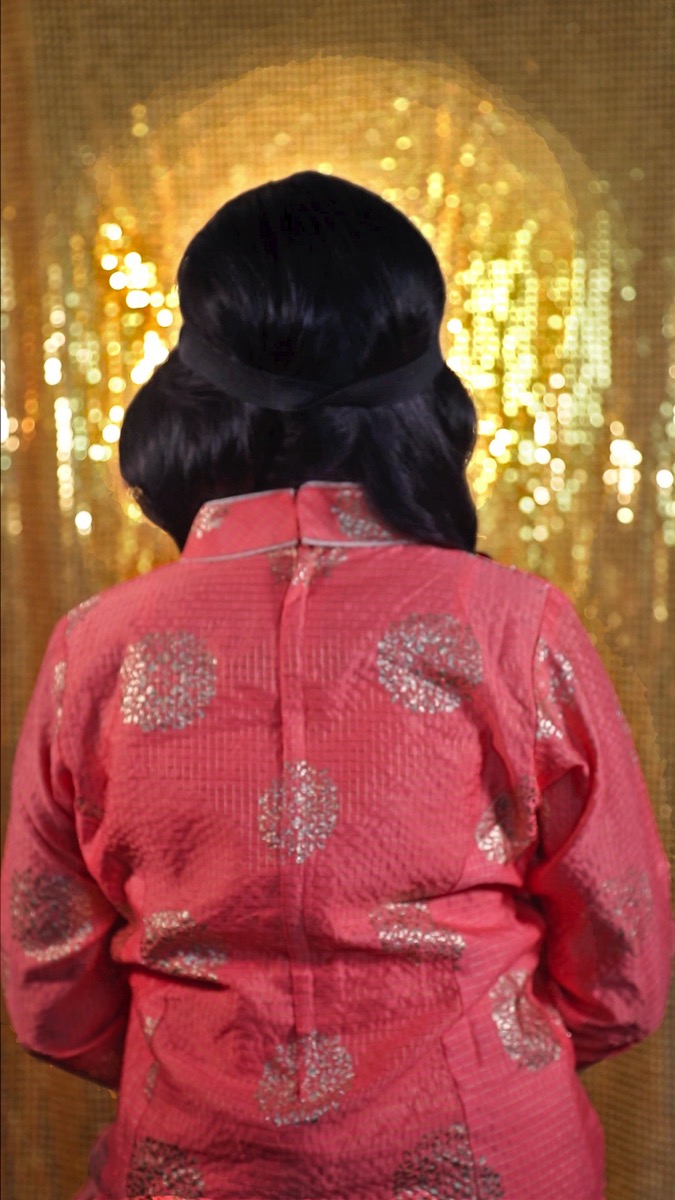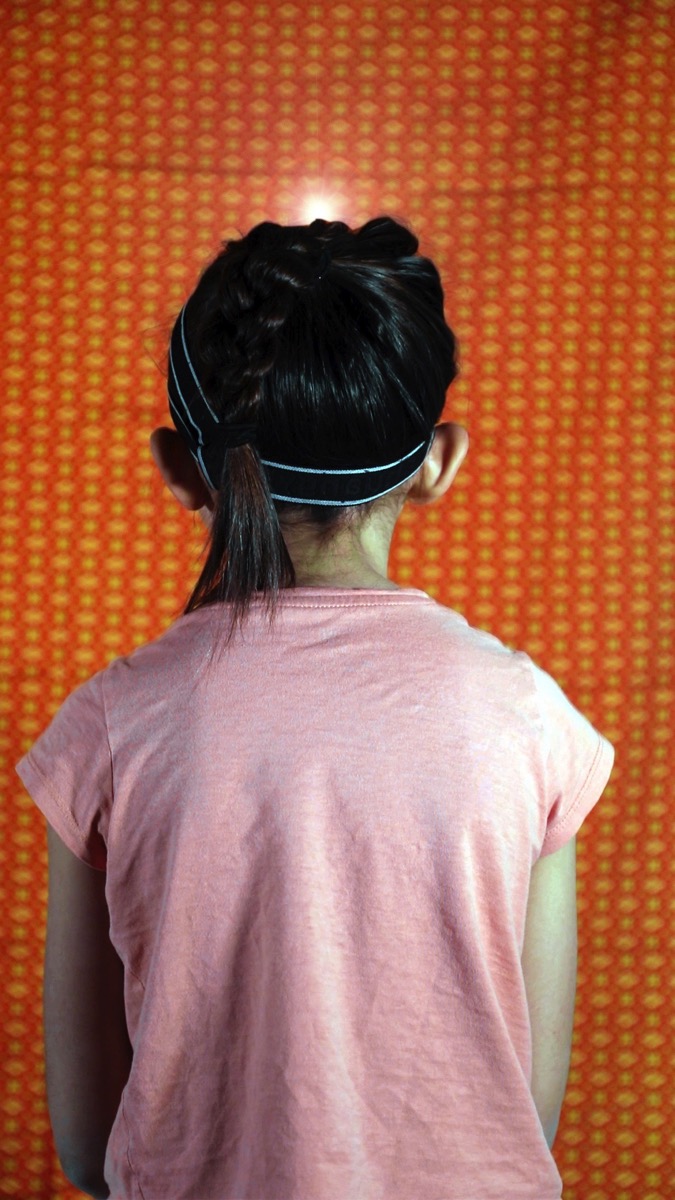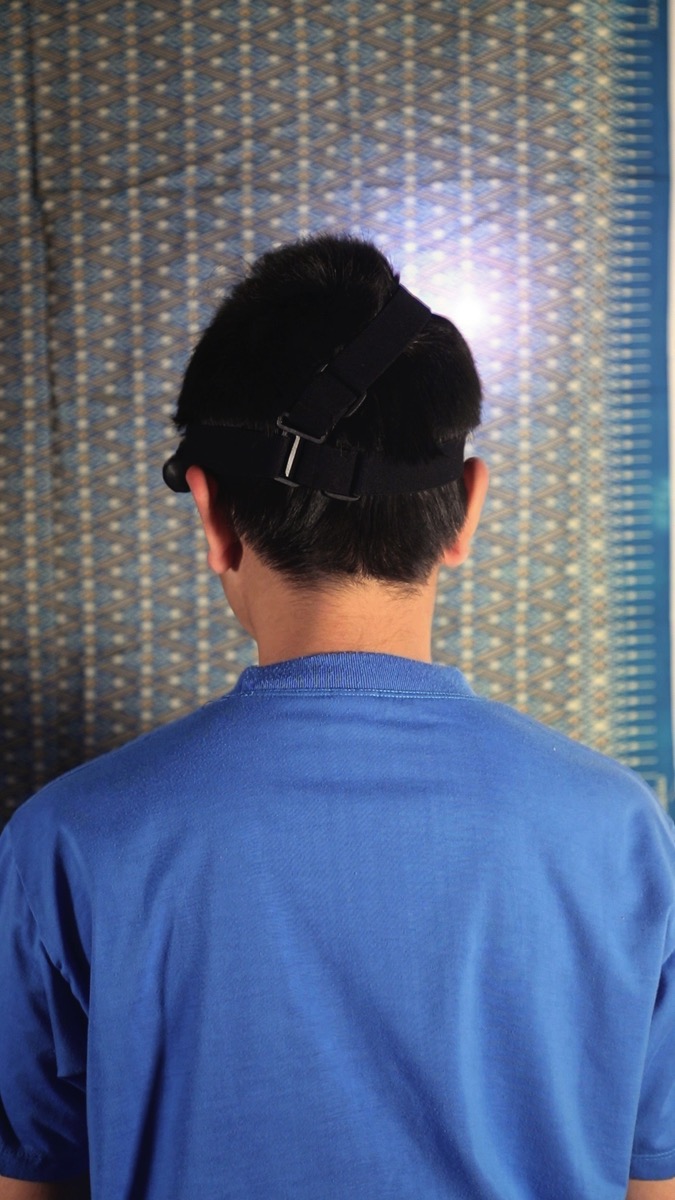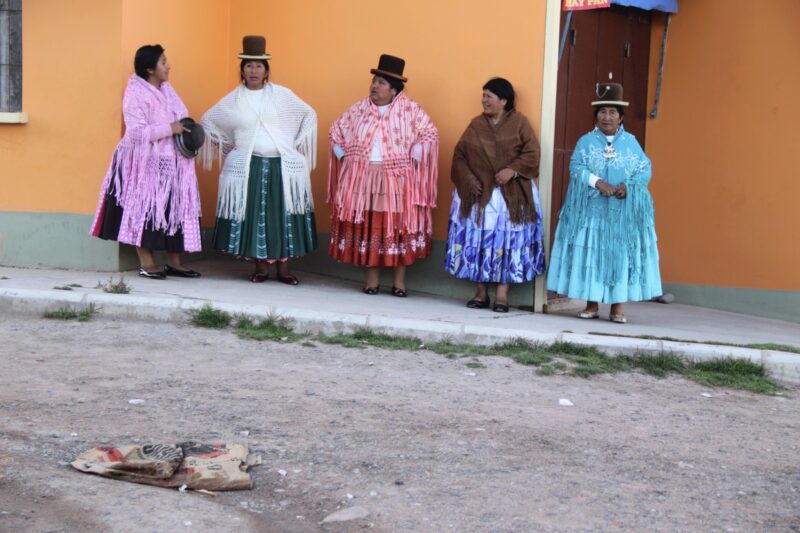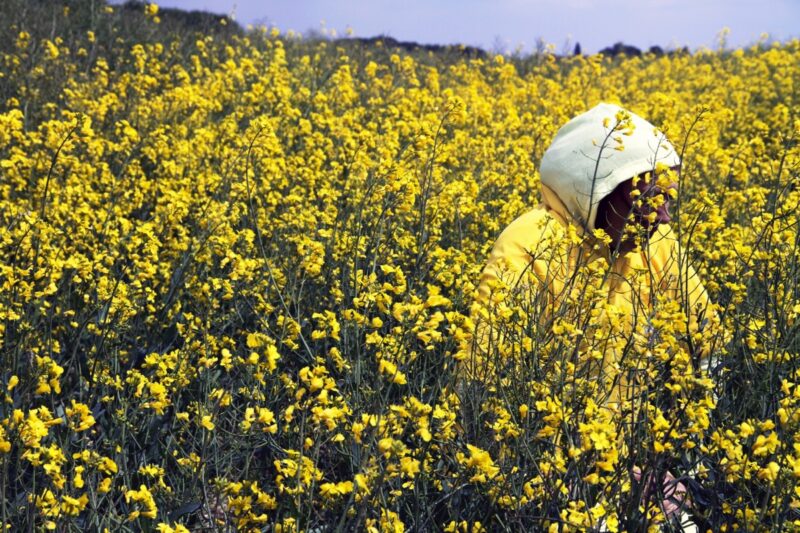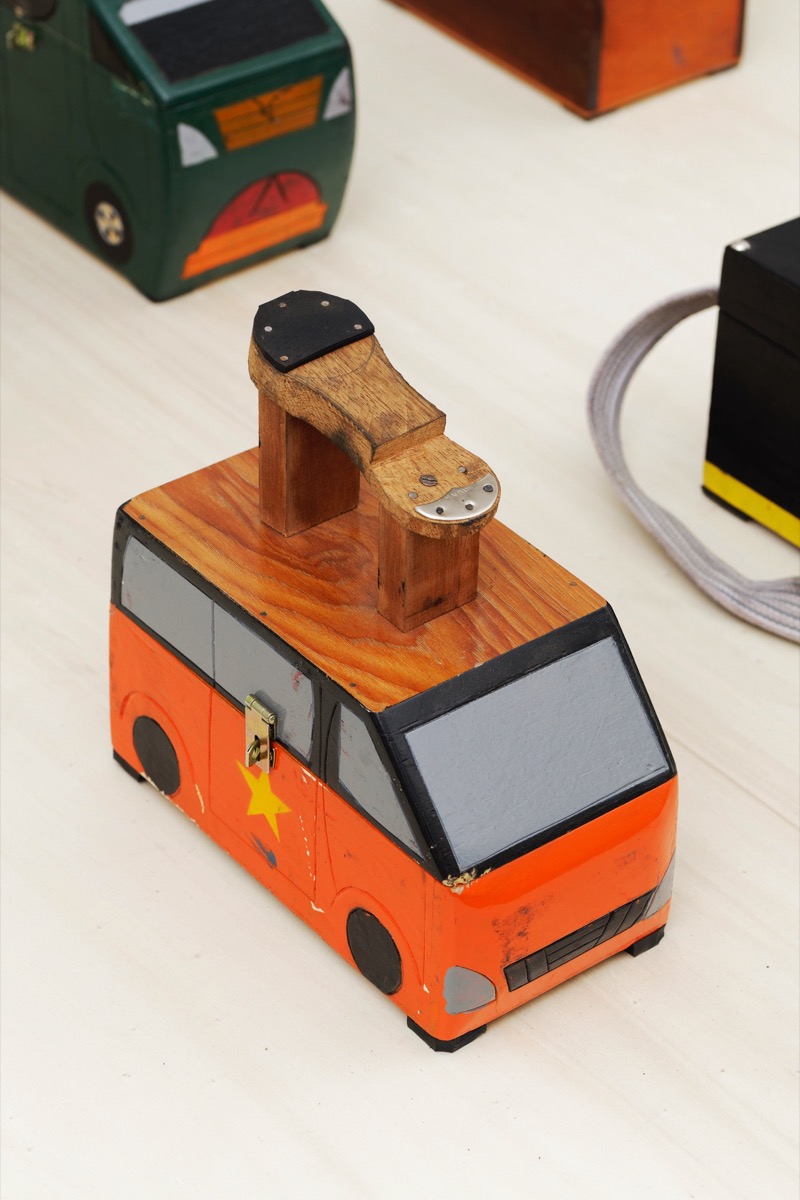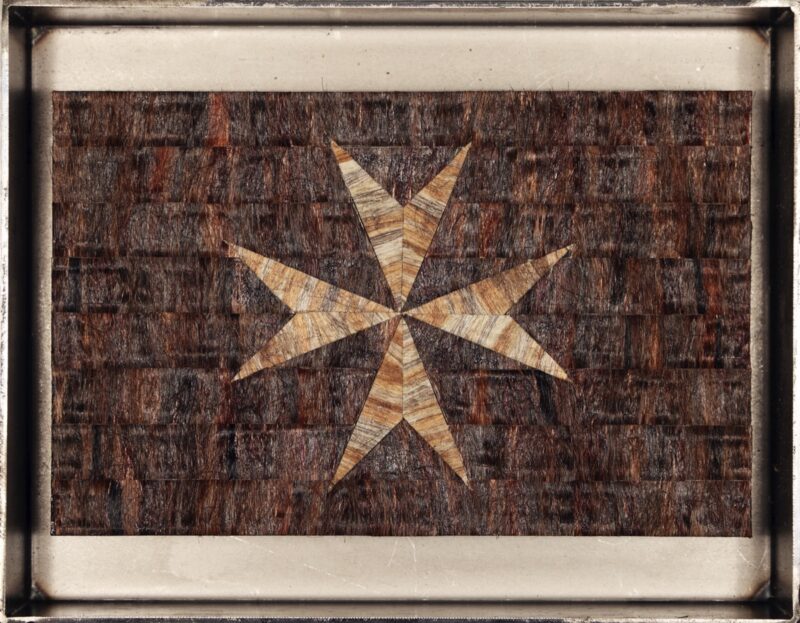[Fall 2024]
In the Eddies of Globalization
by Fabien Pinaroli
[EXCERPT]
The exhibition Abus de souffle at the Jeu de Paume in Paris1 featured some of the economic and political fabulations produced by Bertille Bak over the last ten years. Together, these works could be considered the record of a career and a corpus that are garnering increasing critical enthusiasm, as Bak’s nomination for the Prix Marcel-Duchamp in 2023 testifies.
The exhibition offered an impressive cocktail, worth a long and thoughtful quaff. First, Bak evinced her respect for the people and communities with which she collaborates – her “tribes,” as she calls them – including in the creation of often comical situations; it’s her view that representation shouldn’t be simply the capturing of images but an exchange, a shared journey. Second, she proceeds through long residencies and ethnography-style field observations – though without the scientific objectification – forging bonds of co-participation around economic situations. From these actions arise surrealistic narratives, hovering between documentary and fantasy, anchored by audacity, irony, and imagination. Finally, there are the conditions of production: the video installations and objects on display are made or exchanged with communities. Once this cocktail has been sipped and its ingredients discerned, a young artist’s doubts about the issues involved in her rise to visibility can be tasted.
Bak’s tribes are composed of people caught up in the eddies of globalization, which puts their lives, professions, honour, and youth at risk. They are shoe shiners, stigmatized as pariahs in La Paz, Bolivia, who wear masks so they won’t be recognized (La Brigada, 2018–24); artisans in the Moroccan province of Tetouan put out of work by the arrival of Chinese products (Abus de souffle, 2024); and women earning piecework wages for deveining shrimps caught in the Netherlands (Boussa from the Netherlands, 2017). They are also children who work in mines, harvesting, among other things, the ore used in cell phones (Mineur Mineur, 2022). The scripts for the films in which these groups appear are written collectively. These films are not simple statements but call upon tactical arts that allow for resistance against established power. Where power holds sway, the participants are literally cornered and reduced to experimenting with alternative actions (contortions, flattening, camouflage, insinuation, slipping, squatting, jumping, and more) in a minimalist yet intensive approach to their relationship with the space. In Figures imposées (2015) – with the tactical spirit of Michel De Certeau2 showing through – women in exile, like commandos in training, seem to be training themselves to take folded positions to fit into a car trunk or a plane’s landing gear.
Abus de souffle (2024), a two-channel projection, is a metaphor for collective diversion of the flow of international trade and of exploitation of the Global South by the Global North. The first screen shows one of the last makers of fireplace bellows. Gradually, people gather in the village, each with a bellows, for a collective action: they begin to “blow the wind” toward the sea, toward the chosen place. The second screen shows a mirroring scene on the other side of the Mediterranean. The action takes place in a vacuum-cleaner store, then on a sandy beach edged by huge factories: ten men carry the vacuum cleaners to the beach and position themselves under two large windsocks that show the wind’s direction (south to north), then, arms upraised, they “vacuum the wind” from the beach. Of course, these people’s performances don’t transform the flow of international trade in any way at all, but they are evocative of a group undertaking that might, more seriously – via a sublime butterfly effect – cause a collapse and definitive defeat of capitalism. Bak, who had not envisaged this interpretation, specified in an interview that one of her deep motivations is her belief in the strength of the team3 – more precisely, a subtle mixture of collective power and individual creation. Together, she and her tribe define the structure of a script. A plot whose actions seem, at first glance, devoid of meaning is constructed; the resolution comes only in the final scene. The globalized production system, which creates overspecialized tasks in its search for cost reductions, also renders absurd the circulation routes for goods. In post-production, Bak designs barely masked special effects and collages, very loud sound effects, and a mishmash of image-by-image sequences that give some scenes the ambience of Monsieur Hulot landing in a Méliès film.
For Mineur Mineur (2022), produced during the COVID crisis, Bak could not go to meet in person with her tribe of children working in mines in five countries. In this film, the metaphor of breaking out of difficult social conditions, mechanical devices, or oblique tunnels has the children climbing upward. On five vertical screens, pasteboard settings represent five minerals by colour: black for Indian charcoal, grey for Indonesian tin, a golden colour for Thai gold, shiny silver for Bolivian silver, and blue for Madagascar sapphires. The ambiguity is maintained in the final scene, as it is for most of Bak’s fabulous fables. The minor miners attain a state of grace for long enough to surface above the rocky mass. Then, they are sent back down again. The many exchanges between Bak and the children took place by instant messaging, and Bak delegated the filming to local associations. In the exhibition, this film was therefore a departure; in most of her productions, Bak, her conversations, and her hand-held camera are on site to mediate and transform. Her trio of weapons (audacity, irony, imagination) and her tactical spirit are less present here, replaced by distancing and a world-weary ambience due to the seriousness of the subject. Did the impossibility of contact with the children threaten Bak’s ethics, as is the case in numerous works that draw upon an ethnographic approach and maintain ambiguities that benefit the artists?4 The ethic resides in the length of the relationships that Bak establishes. Because this project is broader than the film presented at Jeu de Paume, Mineur Mineur was only the beginning of collaborations with children. A trip to visit those who work in Indian charcoal mines is in the works.
The exhibition was not simply a succession of video galleries. One could stroll between screens and small shelving units, monitors, and industrial metal racks. Everything was done organically. The bellows templates that Bak had purchased from artisans were presented at the beginning of the path. Farther on, there were the colourful boxes of the Bolivian shoe shiners, then the small bottles filled with shrimp eyes – the only waste not reused after deveining – painted in the colours of Morocco by the women of Boussa from the Netherlands. These utilitarian objects, transformed into ready-mades and therefore aestheticized, cast some doubt on Bak’s sincerity when she ridicules the globalized economic model. Although their provenance is given, the conditions under which she obtained them are not described. What fate does she have in mind for these objects within the contemporary-art circuit through which they will now move? This question seems essential, because the work creates connections with social outcasts; it would be counterproductive to reproduce relations of domination simply to profit the artist.
In Bolivia, Bak purchased from each shoe shiner a box that he had decorated, and she financed the production of a new box. She purchased templates from the Moroccan artisan, and he taught her how to make a new bellows. She paid the women to make the bottles of shrimps’ eyes. In the exhibition these objects become witnesses: their indexical presence stands in for the people who took part in the actions. The commercial circulation of these objects is totally ruled out. On the subject of her own red lines and the ambiguities of her work, Bak speaks of an intrinsic ethical duality. In an interview that highlights her self-critical sense, Laurent Jeanpierre suggests to her that “taking your altered biography seriously would then lead to a requestioning of all of your work; what if it were not first and foremost about all these marginalized, little-known ‘families’ but about the ambivalence that they arouse, the mixture of attraction and repulsion that they provoke – in art, among artists, with the public? You don’t objectify groups, with the distancing that such a gesture would imply; you scrutinize our feelings, and above all your own, about those who have a good life without us, and maybe even without you.”5
Bak’s work settles where it is most likely to be an active agent: the representation of marginalized groups and relations between people. It’s an excellent resistance tactic. Collective work, that of diversion and putting into motion, taking charge of self-representation, composing an alternative memory in images – all this is undeniably pertinent. Is it useful and life-saving? For whom? These are the questions being asked today. Finishing on a note of hope consists, perhaps, of suggesting to Bak that she similarly examine the art market or the condition of artists, her peers, many of whom are also on the road to pauperization. Translated by Käthe Roth
[ Complete issue, in print and digital version, available here: Ciel variable 127 – SISTERS, FIGHTERS, QUEENS ] [ Complete article in digital version available here: In the Eddies of Globalization]
NOTES
1 February 13 to May 26, 2024.
2 Michel De Certeau, L’Invention du quotidien. Les arts de faire (Paris: Gallimard, 1992), 60.
3 Interview with Bak, March 5, 2023.
4 Hal Foster, in “The Artist as Ethnographer?” (in The Traffic in Culture: Refiguring Art and Anthropology, ed. George E. Marcus and Fred R. Myers [Berkeley: University of California Press,1995], 302–09), undertakes to challenge ethnographic authority – more specifically the sociological condescendence of artist-assisted self-representation, as Julie Portier reminds us in “Finir en beauté, les fictions politiques de Bertille Bak” (Journal des Églises 12 [2013]). In an interview with Laurent Jeanpierre, Bak herself, aware of the ambiguities of her work, stated, “Isn’t the argument denouncing human exploitation also profiting from the system it denounces? For beyond this always so-called collaborative and participatory work, it is the artist’s name alone that rises in capital letters in art centres” (our translation). See Bertille Bak et al., Bertille Bak : Faux et usage de faux (Rennes: PU de Rennes, 2024).
5 Bertille Bak : faux et usage de faux (our translation).



